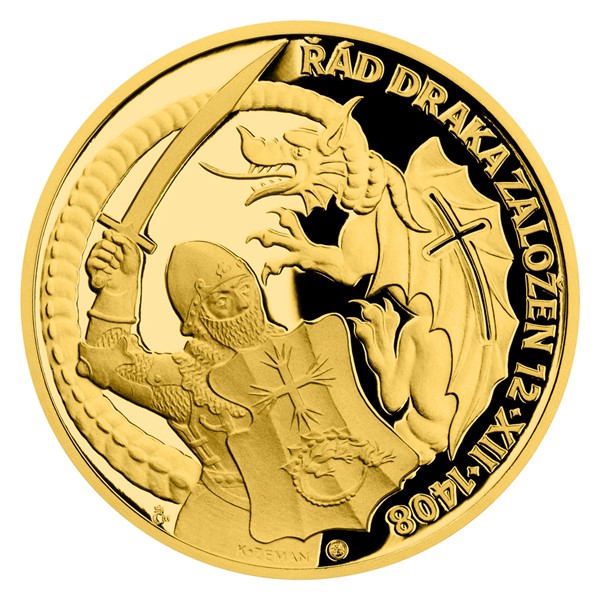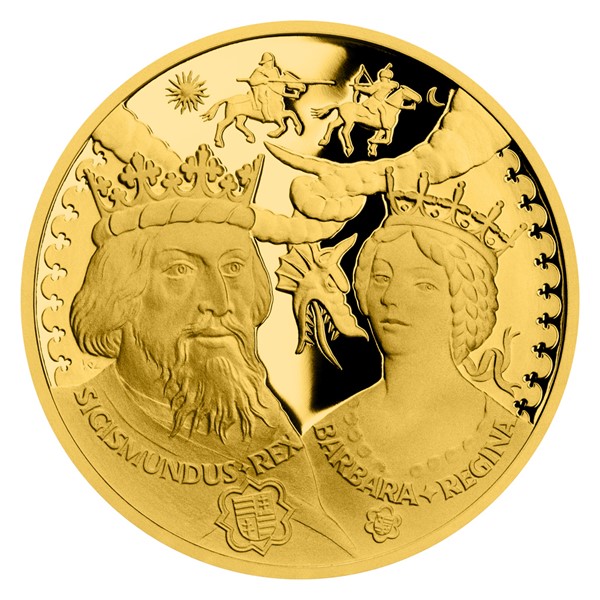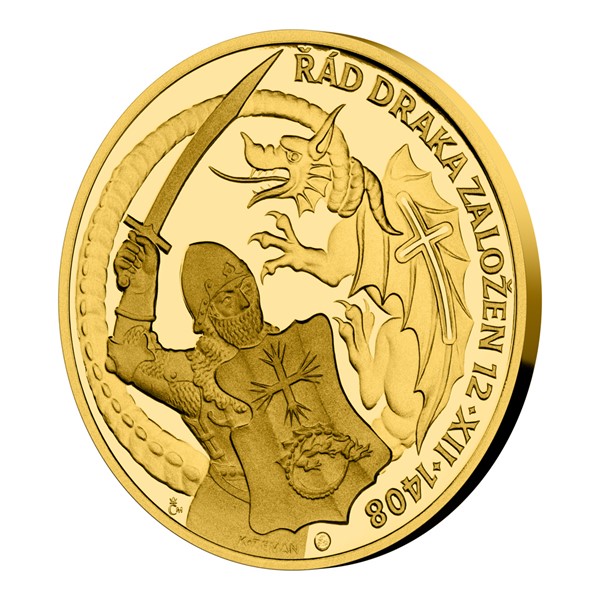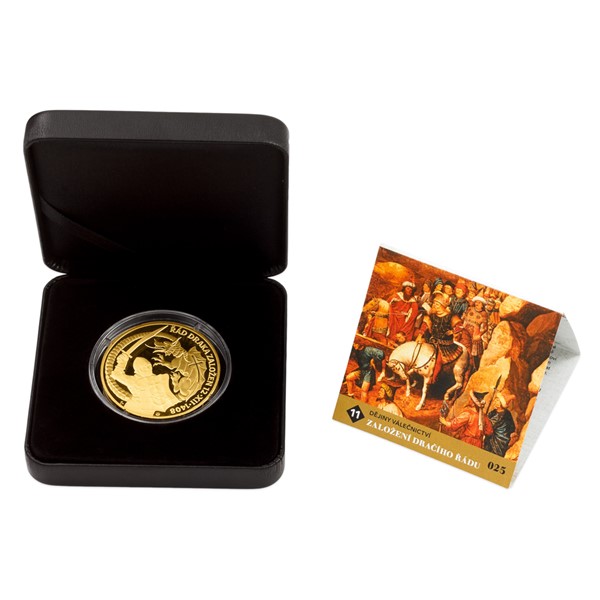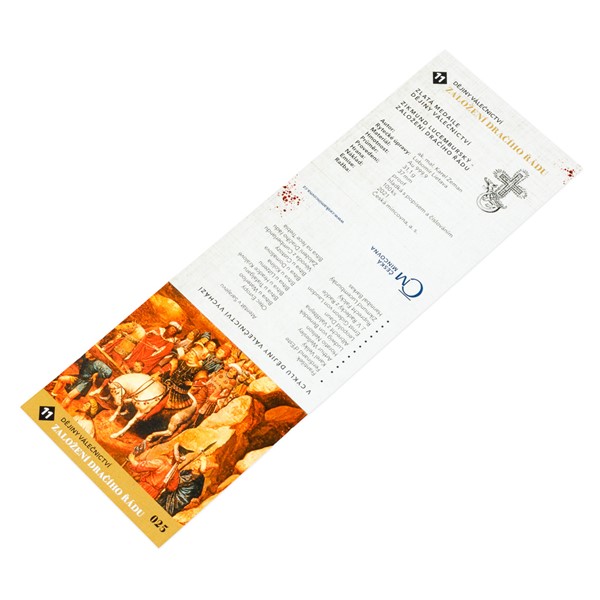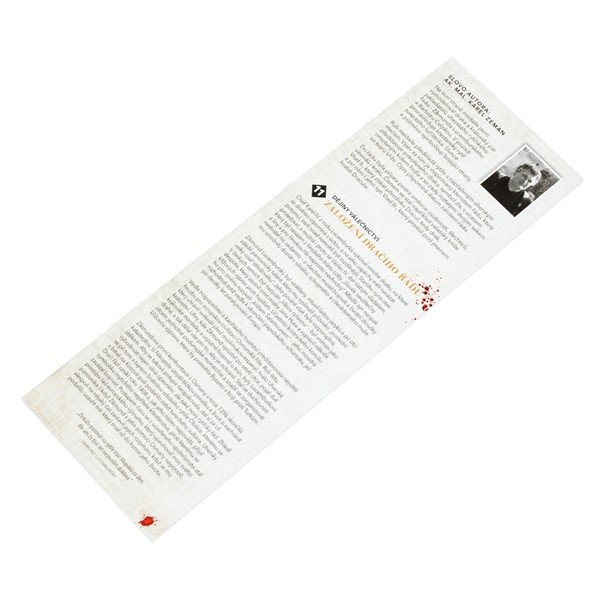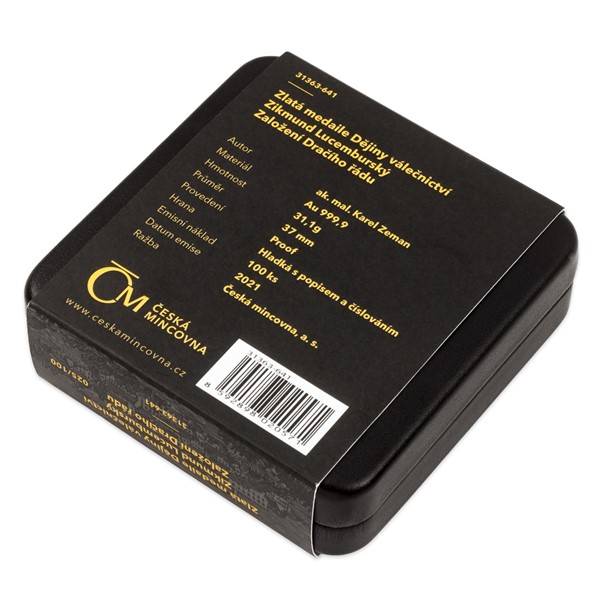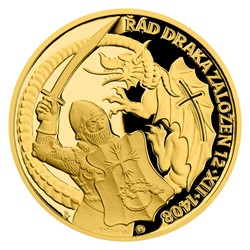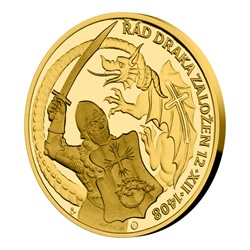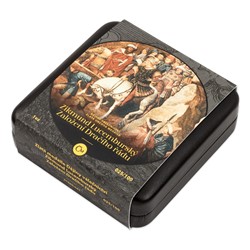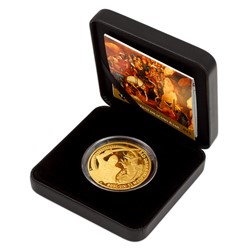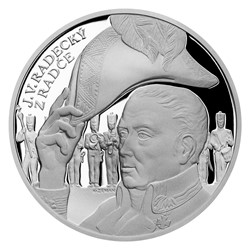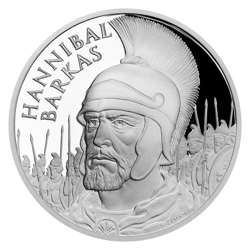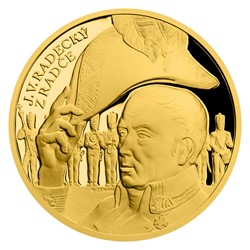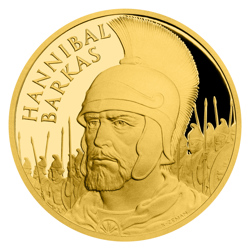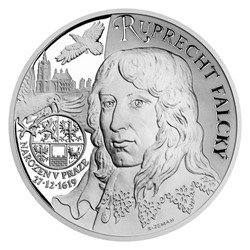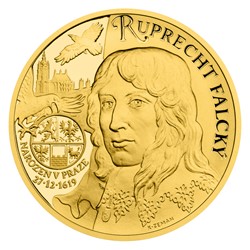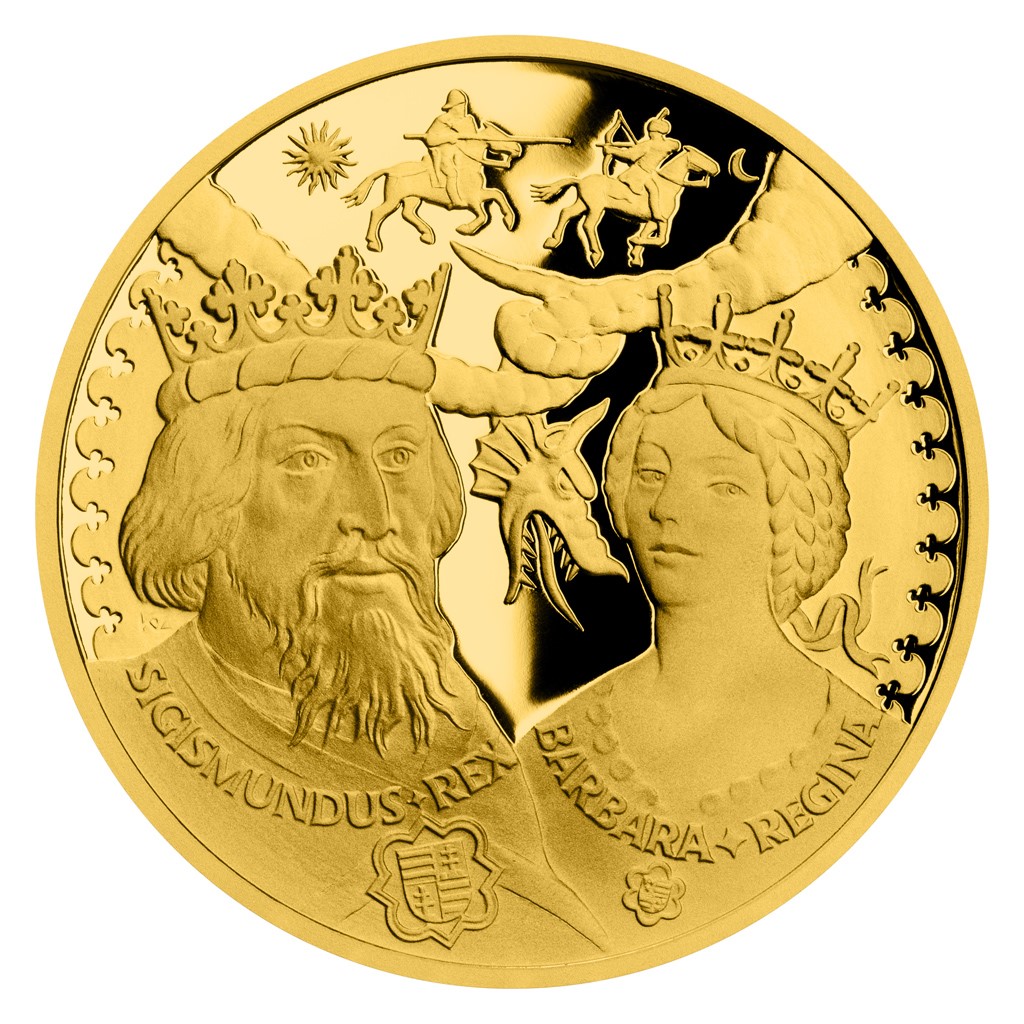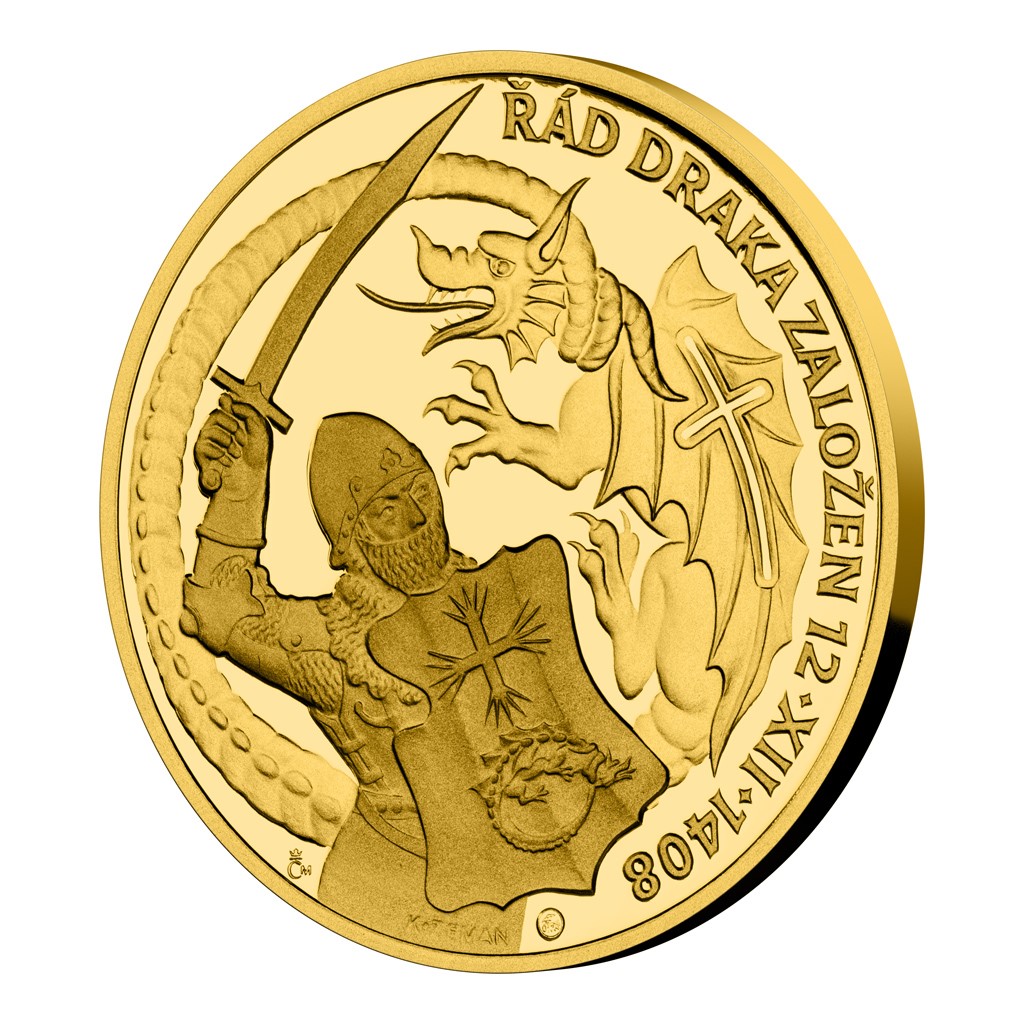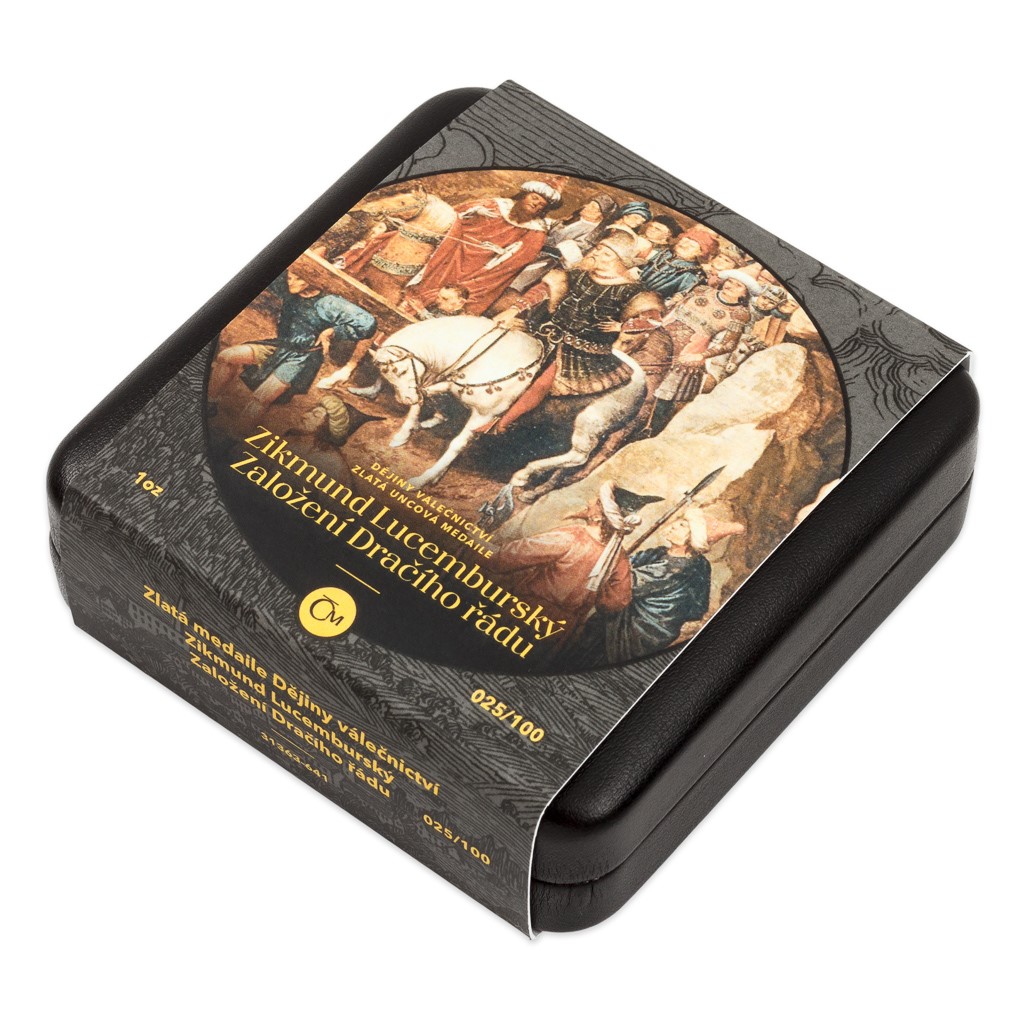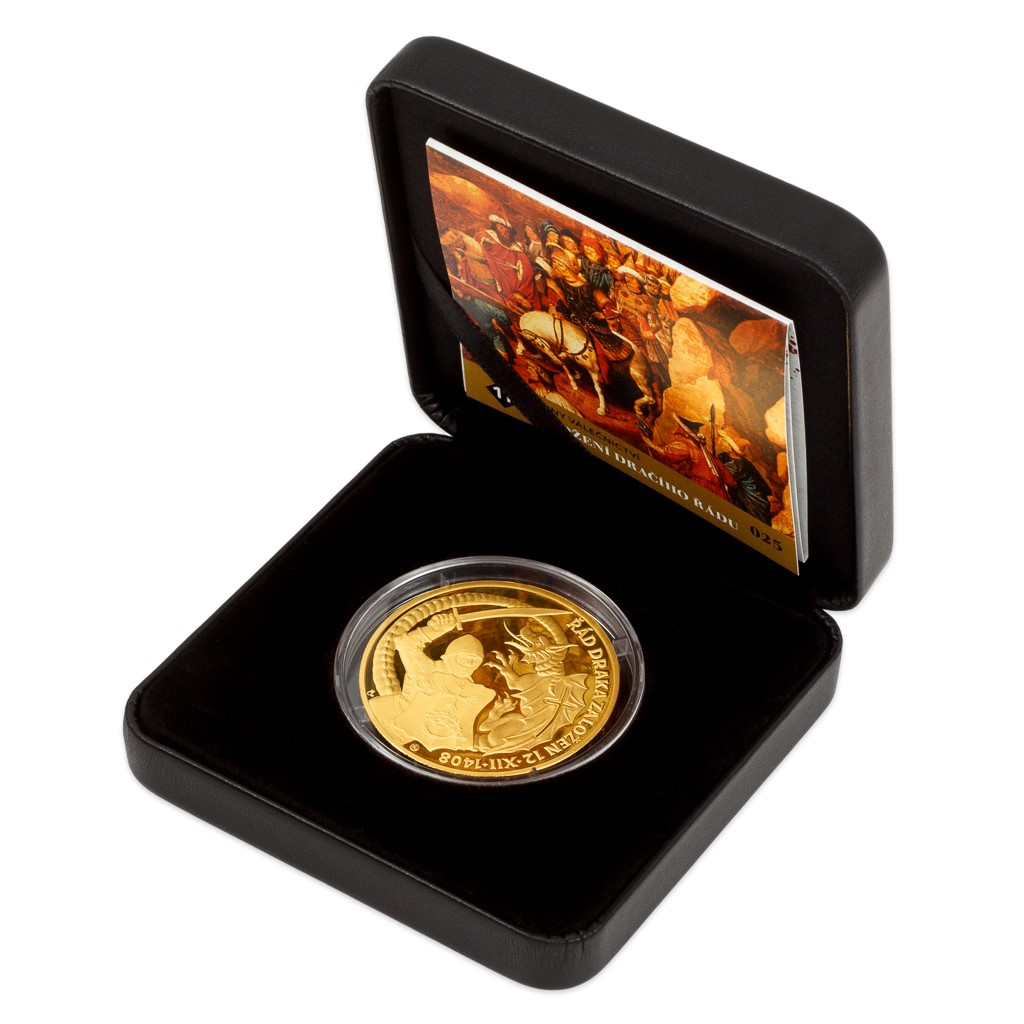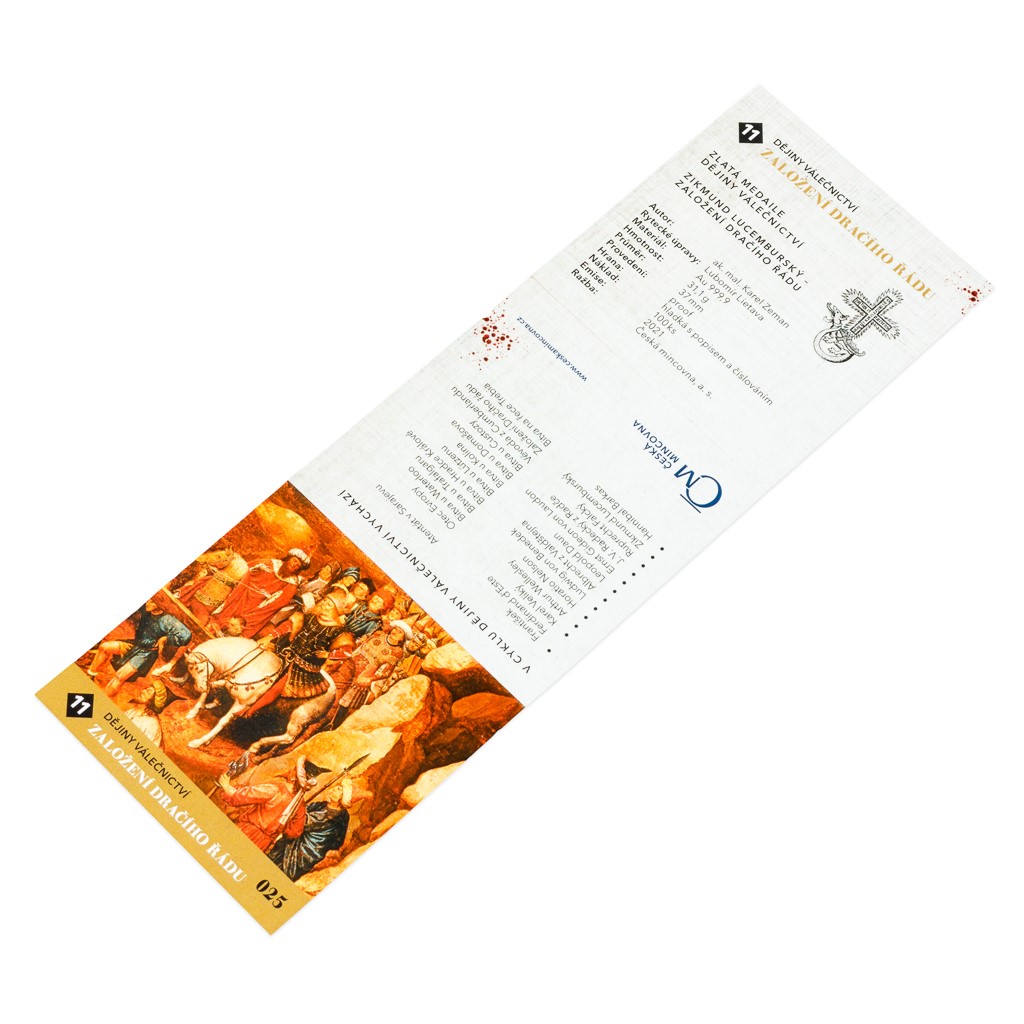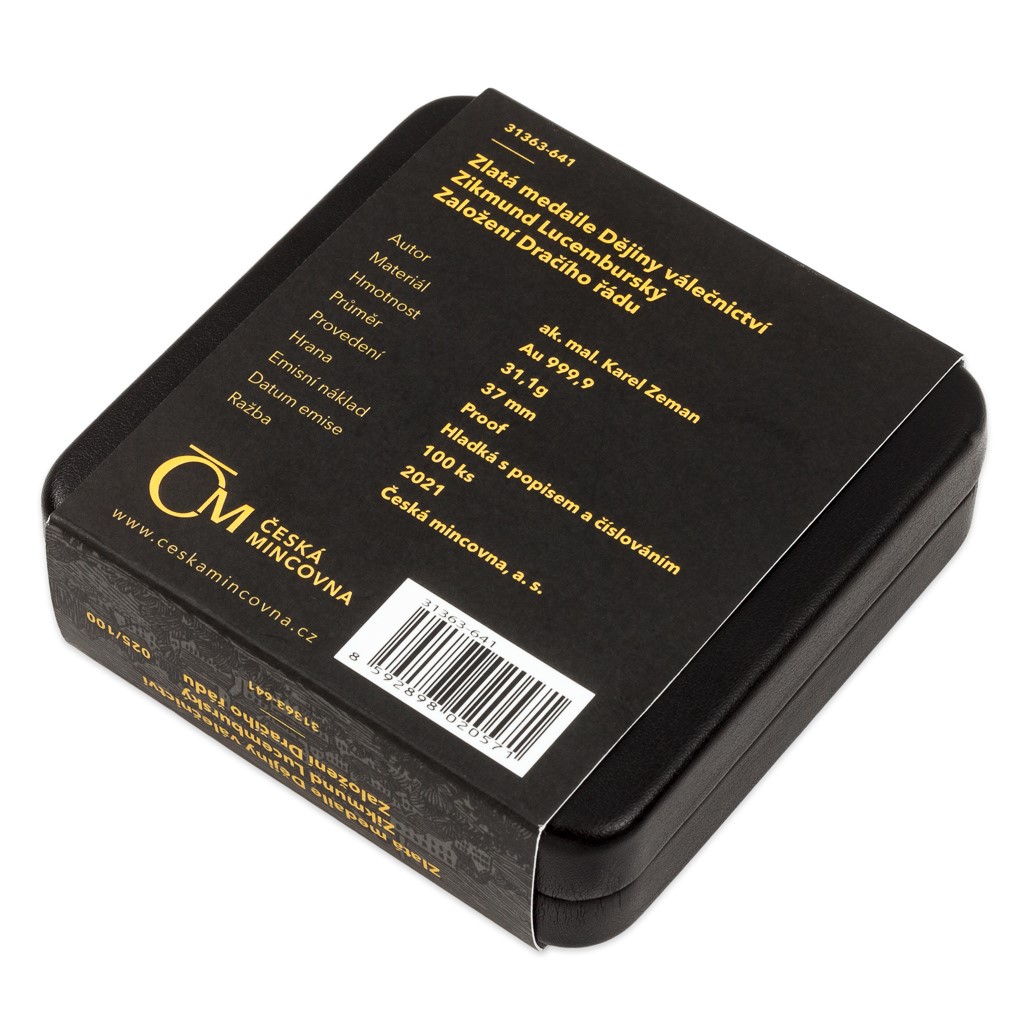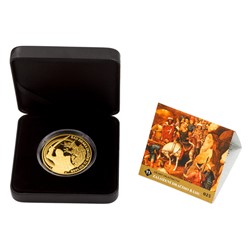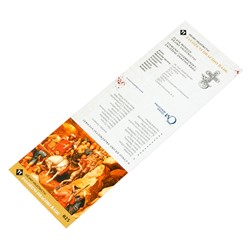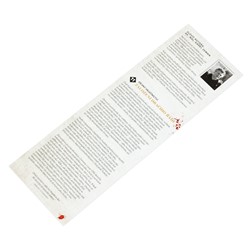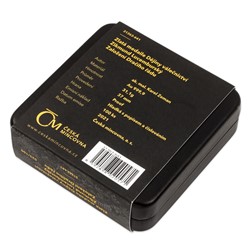Gold one-ounce medal History of Warfare - Sigismund of Luxembourg - The Order of the Dragon proof
Personal pickup at the store
Product description
The eleventh gold medal of the Czech Mint from the series entitled History of Warfare designed by Karel Zeman mirrors the story of the controversial Emperor Sigismund of Luxembourg and his Order of the Dragon.
Emperor Charles IV of Luxembourg performed many deeds that are still remembered with reverence, and his achievements were to be followed up by descendants who could not have been more different. The elder son was a protégé of his father, and perhaps for this reason Wenceslaus IV became a weak ruler who was dethroned from the Roman throne as "a useless and lazy man, and utterly unfit for the Roman Empire." The younger son, on the other hand, got nothing for nothing - he had to fight for everything, and the trials of life allowed him to mature into a strong, capable and purposeful man. Sigismund of Luxembourg was educated, spoke many languages and inherited his father's imperious talent, which earned him the nickname "the last great emperor of the Middle Ages". His reputation, however, was controversial. In Bohemia he was called the "red fox" - he was perceived as a despot who caused the death of Jan Hus and launched several crusades against the Hussites. The participants of the Council of Constance called him "King Solomon" - his wise decisions led to the end of the papal schism that paralysed Europe for decades. Alongside the Tridentine papacy and heretical Hussitism, the Ottoman Empire posed the greatest threat to European civilisation. Sigismund's dear Kingdom of Hungary played the role of a shield protecting the continent from Muslim expansion. But it was not faring well in the fight against the Turks, so the emperor founded an order of chivalry to change that. In doing so, he saw himself in the secret brotherhood of the Serbian knight Obilic, who had succeeded in killing the Turkish sultan in the Battle of Kosovo. The Hungarian Order of the Dragon was founded in 1408 and, as its name suggests, adopted the symbolism of the mythical enemy of Christianity against whom he was pledged to fight. Over time, the closed community became a prestigious order of European importance...
"On the obverse side of the medal I have modelled a dragon and the royal couple of the founders of the Hungarian Order of Chivalry - Sigismund of Luxembourg and Barbara of Celje. In the background a Christian knight is chasing a Turkish archer. The sun and half-moon symbolize the warring sides. The reverse side of the medal presents a knight with a drawn Hungarian sword. The scene behind him is inspired by the jewel of the Order, which represents a humiliated dragon, a symbol of evil, with its tail wrapped around its throat and its back split by a double cross-shaped cut. The inscription commemorates the date of the Order's foundation," says academic painter Karel Zeman. "The Order admitted a diverse mix of personalities, nobles, dukes and kings. For example, Prince Vlad II of Wallachia, who was nicknamed Dracul, i.e. the dragon, became a member, followed by his son Vlad III, who became known as Count Dracula," the medal maker adds.
The gold medal is limited to only 100 pieces. Each medal is hand-numbered on the edge and supplemented with a special certificate of authenticity which includes the author's accompanying word and historical text.
Note: The author decided to change the schedule of issuance of the History of Warfare series. The medal with the motif of the Battle of Hannibal on the Trebia River will be issued as the twelfth in the series.
 čeština
čeština
 slovenčina
slovenčina
 english
english
